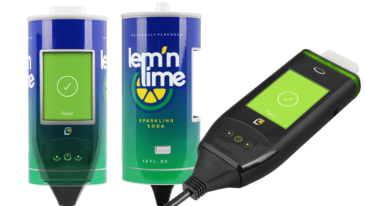
Drunk driving is a problem that should concern everyone. Over 10,000 people die everyyear as a result of alcohol-related traffic accidents. This averages out to aperson dying every 50 minutes, every day, all year long. Alcohol-relatedfatalities remain a large source of preventable death, despite a long-standingand wide-scale effort by law enforcement agencies and other organizations toaddress the problem. These efforts have taken the form of education andheightened enforcement alongside stiffer penalties.
One of the key factors in enforcing driving under the influence (DUI) laws is bloodalcohol content (BAC). An individual’s BAC is one important way that impairmentis measured. In this article, we’ll explore what BAC is and how blood alcohol content ismeasured. We’ll also look at what different BAC levels equate to interms of impairment. Understanding the relationship between impairment and BAClevel is important all motorists, as it informs decisions about responsible drinking.
What is BAC?
Your blood alcohol contentlevels, or BAC, is the concentration of alcohol that is measured in yourblood. Your BAC can be found during a preliminary alcohol screening (PAS) testsuch as a breathalyzer. While a breathalyzer analyzes the amount of alcohol inyour breath and is used in the field to determine impairment, a blood test willproduce a much more accurate picture of how much alcohol is actually in your system.
Your BAC is often seen as a percentage. This percentage equates to the number ofgrams of alcohol per 100 milliliters of blood. The federal legal limit fordriving under the influence is .08%, which is the format you will most likelysee your BAC listed as. A BAC lower than .08% represents lower levels of impairment,while a higher BAC corresponds to increased impairment.
How is BAC Measured?
There are three primary tests for BAC; urine, breath, and blood. Calculating your BACbased on the number of drinks you had is highly inaccurate and shouldn’t betrusted. Of the methods we have described, blood tests produce the mostaccurate conclusion. The test involves a health professional taking a smallamount of blood, which is then analyzed to determine the number of grams ofethanol, or alcohol, per 100 milliliters of blood. This is then presented as apercentage such as .08%.
What is the Legal Limit?
In every state except for Utah the legal limit for driving under the influence is.08%. Utah recently became the first state to implement a lower legal limit of.05%, which equates to roughly 1-2 drinks in an hour for an average sized male.It is important to understand that having a BAC of .08% still represents asubstantial level of impairment. This is why Utah recent moved to furtherreduce the legal level of impairment. Even with a BAC of .05%, which is lessthan the legal limit in most states, you’ll still be much more likely to beinvolved in a car accident than someone that hasn’t consumed any alcohol. Thisis why it’s incredibly important to exercise responsibility when drinking andfind alternatives to driving.
It’s good to keep in mind that BAC is difficult, if not impossible, for you tocalculate solely based on the number of drinks you have been drinking. Everyonehas seen the charts that indicate the number of drinks you would have toconsume in an hour to reach a certain BAC level. These charts provide only arough approximation, and shouldn’t be relied on to provide an accurate pictureof BAC levels. In reality, your BAC level will be determined by how muchalcohol you have consumed, how much time has passed, your age, weight,genetics, gender, liver function, food intake, and many other factors.
Final Thoughts
Increased enforcement efforts to combat drinking and driving have resulted in most peoplebeing aware of what BAC is. Understanding how BAC is calculated can help youmake an informed, safe decision. The truth is that even one drink can result insome level of impairment and increase your risk of being involved in anaccident. Drinking and driving simply isn’t worth it. One common misconceptionis that by counting the number of drinks you have consumed in the past hour youcan calculate your BAC level. As this article has demonstrated, calculating BACrequires conducting a blood test or other similar test. Your BAC levels can’tbe accurately calculated by counting the number of drinks you have consumed dueto the fact that BAC can vary substantially depending on a number of factors.These include your weight, age, height, health, gender, and even what you haveeaten that day. As such, it is better to err on the safe side and avoid drivingafter drinking.
Sources
- https://mcwell.nd.edu/your-well-being/physical-well-being/alcohol/blood-alcohol-concentration/
- https://www.lowcostinterlock.com/blog/ignition-interlock-faq/blood-alcohol-content-bac/
- https://www.csbsju.edu/chp/health-promotion/alcohol-guide/understanding-blood-alcohol-content-(bac)
- https://medlineplus.gov/lab-tests/blood-alcohol-level/


